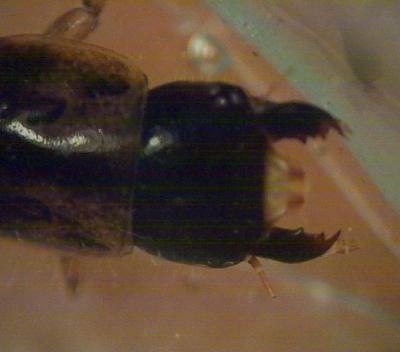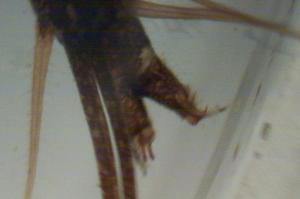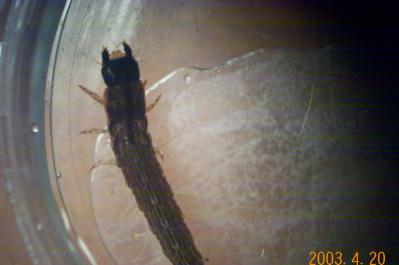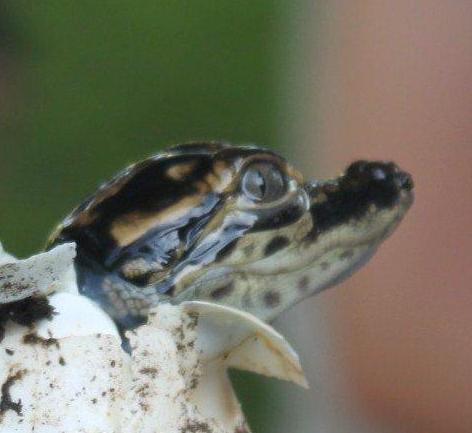|
Pond Life of Brazos Bend State Park
Fishflies and Dobsonflies: Order Megaloptera
Family Corydalidae
|
Fishflies
and Dobsonflies make up the family Corydalidae. Some
authorities classify this family as belonging to the order
Neuroptera while others put them along with alderflies in a
separate order, Megalopera. They are large flying insects whose
long bodies resemble that of a dragonfly, but whose wings are much
larger in proportion to their bodies, and are very lacy and
delicate looking.
|
|
Dobsonflies
are distinguished by their large mouthparts. The male dobsonfly's
mandibles look like a pair of ice tongs, while the female's
mandibles look like the jaws of a vise. Fishflies mandibles are
smaller. Their distinguishing feature is the pair of large
feathery antennae on their heads. Dobsonflies are only found
occasionally in the park. Fishflies are very common in the park,
especially on summer nights.
|
|

Fishfly (Chauliodes) 1.5 inches long
|
|

Hellgrammite, probably fishfly, 1 inch long
|
|
Although
dobsonflies and fishflies are flying insects, their larvae, called
hellgrammites are aquatic. Hellgrammites resemble a long worm with
spindly legs and many long thread-like growths on their abdomens.
These threads act as gills, and help the larva to breath
underwater.
|
|
The mandibles are large and powerful, with jagged teeth in them.
Hellgrammites are active hunters. They catch smaller animals with
their large jaws, and swallow them whole.
Some
hellgrammites may grow to be over 3 inches long. They are often
raised or collected and sold as bait to fishermen.
|
|

Hellgrammite showing powerful mandibles
|
|

Hellgrammite showing claws on proto-legs at the end of its abdomen.
|
|
Corydalidae
larvae look very much like the larvae of the water
scavenger beetle. One way to tell them apart is that
hellgrammites have a pair of appendages called proto-legs on the
last segment of their abdomen. Each of these proto-legs has a pair of claws on it.
|
|

|
|
Hellgrammites
may live in the water for up to 3 years before becoming adults.
They crawl out of the water, dig a small hole for protection and
go into a pupal state for from 1 to 14 days. They then emerge as
adult insects and fly away. Their adult stage is very short, only
8-14 days.
Corydalidae
larvae are considered good indicators of water quality because
they are sensitive to pollution.
|
|
Next
|
Arachnids – Spiders and relatives |
Dragonflies and Damselflies - Odenata |
Prev
|
Updated: Aug 12, 2011
|


